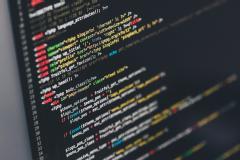This course is your gateway to the world of coding and robotics, where creativity meets technology. Whether you're new to programming or have some experience, this course is designed to take you step by step from the basics to advanced robotics programming.
We'll start with Blockly, a visual programming tool that makes learning the fundamentals of coding both easy and fun. You'll solve puzzles, complete challenges, and build a strong understanding of how code works. Then, we'll dive into VEXcode VR, where you'll control a virtual robot, navigate mazes, create art, and tackle real-world problems using sensors and advanced coding techniques.
By the end of this course, you'll not only be able to write your own programs but also understand how to apply these skills in robotics and beyond. Get ready to code, create, and explore the endless possibilities of programming with VEXcode VR!
Course Description:
This course is designed to introduce students to the exciting world of programming and robotics, guiding them from foundational concepts to advanced problem-solving skills. The course begins with interactive Blockly game challenges, which provide a fun and intuitive way to grasp essential programming principles like sequencing, loops, and conditions. As students progress, they transition to VEXcode VR, a more advanced coding platform where they will learn to program a virtual robot. Through hands-on projects and challenges, students will explore movement control, sensor integration, and complex algorithms, ultimately building a strong foundation in coding and robotics.
Structure:
Blockly Game Challenges (Sessions 1 to 7)
- Overview: The first part of the curriculum uses Blockly, a visual programming language where students drag and drop blocks to create code. This approach helps beginners understand the basics of programming without worrying about syntax errors.
- Key Concepts:
- Sequencing: Understanding the order of operations in a program.
- Loops: Repeating actions efficiently using loops.
- Conditions: Making decisions in a program based on certain criteria.
Objective: Build a strong foundation in logical thinking and problem-solving, making the transition to more complex coding languages smoother.
VEXcode VR (Sessions 8 to 24)
- Overview: The second part of the curriculum introduces students to VEXcode VR, a text-based coding environment used for programming a virtual robot. This tool bridges the gap between visual programming and more traditional coding.
- Key Concepts:
- Drivetrain Movement: Learning to control the robot's movements with precision.
- Art Canvas and Sensors: Using the robot to draw, navigate mazes, and interact with the environment through sensors (distance, position, eye sensor).
- Control Structures: Implementing loops, conditions, and variables to create more complex programs.
- Functions: Creating reusable code blocks with and without return values.
Objective: Equip students with the skills to write more advanced programs, understand how sensors work, and solve complex challenges, ultimately preparing them for real-world coding scenarios.







